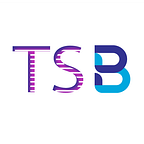Metaverse in Remote working (Part 84)
Welcome to the 84th part of the 100-part series on Blockchain.
With more people working remotely, the metaverse has many potential uses in the modern workplace and beyond. Remote work refers to the practice of employees working from a location other than their centralized office(s). It could be an employee’s home, a co-working space, or any other place other than a traditional corporate office building.
(i) Collaborations and meetings in the metaverse: Limited mobility and body language in online meetings and video conferences can make team meetings fatigue and unproductive. But, in the metaverse, employees can create 3D avatars with unique facial features and clothes. The avatars of remote employees can meet and even walk around between virtual offices and meeting rooms in the metaverse without leaving their physical homes. Thus, employees thousands of miles apart can discuss ideas and work on projects together in the same virtual ‘room.’
(ii) Improve mental health: The Metaverse can potentially increase productivity and improve the mental health of professionals who work remotely by simulating office spaces, holding meetings in real-time with remote colleagues, conducting business presentations in dynamic environments, and having face-to-face conversations with people from all over the world.
The meditation and yoga sessions can be organized in a virtual garden or lakeside in the virtual world, which employees can attend and relax.
(iii) Workshops and events in the metaverse: Virtual workshops, conferences, and events can be organized in the metaverse that will replace the need for employees to attend them in person. The venues for conferences and events can be customized, which will make them more engaging. It can be on the Moon, in the forest, or on a virtual beach. No matter where they are located, remote participants can access live, interactive networking opportunities and content. Just log on through the conference portal, and you’re good to enter the metaverse to attend events wherever you may be in the world.
In a virtual event, a virtual booth can also be set up where avatars of attendees can walk up in much the same way as they would with a physical event.
(iv) A Healthier Remote Work-Life Balance: With the lines between work and home life being so blurred, reports say remote workers have difficulty disconnecting and “turning off” at the end of the day. But saying goodbye to your team in the metaverse and physically taking off your VR headset may mark a clear line between work and home life. It gives off the same vibes as walking out of a physical office building and heading home to relax and spend time with family.
(v) Virtual training and onboarding process: 3D displays with step-by-step instructions also allow interactive employee training and upskilling. Employees can put themselves into virtual real-world scenarios, like a simulated cybersecurity breach or client meeting, and practice different solutions.
Virtual onboard processes can also be benefitted from the metaverse. Instead of having new recruiters read lengthy page documents about your company, they can explore a personalized, interactive 3D experience that gamifies learning. So it’s much more fun and exciting to learn on the metaverse.
The two biggest players in the metaverse workspace so far are Microsoft Mesh and Meta’s Horizon Workrooms.
If you liked this article and want to know more about Blockchain, NFTs, Metaverse, and their applications, click the below link.
Happy learning!
